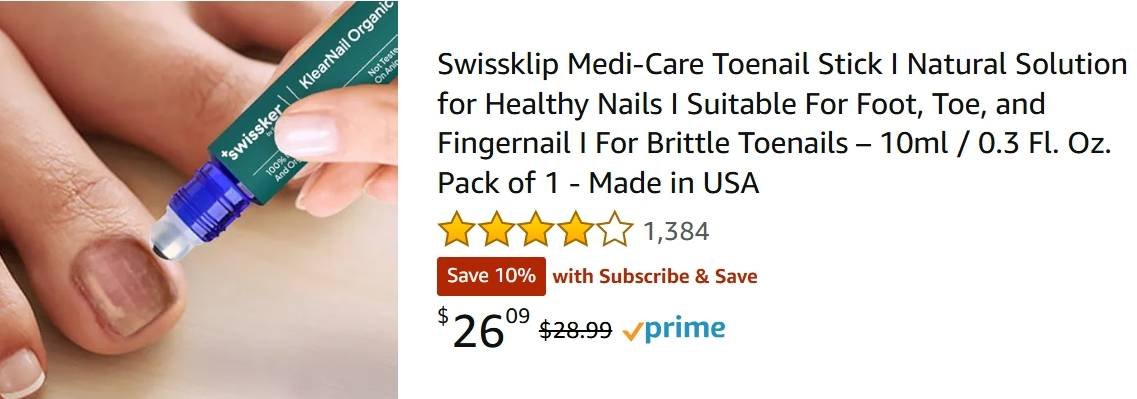When Should You See a Doctor for an Ingrown Toenail?
Find a Podiatrist Near You
Get same-day appointments with verified podiatrists. Insurance accepted.
Ingrown toenails can be painful and frustrating, but not every case requires medical attention. In many instances, home remedies can help manage mild discomfort. However, if the condition worsens or complications arise, seeing a doctor is the safest option. Knowing when to seek professional care can prevent infections and long-term nail damage.

Understanding Ingrown Toenails
Not all ingrown toenails need immediate medical attention, but knowing the warning signs can save you from serious complications. In this Midwest Podiatry Centers video below, experts explain when at-home remedies are safe and when you should head straight to a podiatrist. It’s a practical guide for recognizing pain, swelling, or infection before they turn into bigger problems.
An ingrown toenail occurs when the edge of the nail grows into the surrounding skin instead of over it. Common causes include:
- Improper Nail Trimming – Cutting toenails too short or rounding the edges encourages inward growth.
- Tight or Poorly Fitting Shoes – Shoes that put excessive pressure on the toes can force the nail into the skin.
- Injury or Trauma – Stubbing your toe or repeated pressure from sports can increase the risk.
- Genetics – Some people are naturally prone to developing ingrown toenails due to the shape of their nails.
Signs That an Ingrown Toenail Needs Medical Attention
While minor cases can improve with home treatments, certain symptoms indicate that a doctor’s visit is necessary.
1. Severe Pain and Swelling
Mild discomfort is normal, but intense pain and excessive swelling suggest that the condition is worsening. If walking or wearing shoes becomes unbearable, a medical professional can provide relief and prevent further complications.
2. Signs of Infection
An untreated ingrown toenail can lead to infection, which requires medical intervention. Warning signs include:
- Redness spreading beyond the toe
- Pus or fluid drainage
- Warmth around the nail
- A foul odor
If you notice these symptoms, prompt medical attention can prevent the infection from spreading.
3. Recurring Ingrown Toenails
If you frequently experience ingrown toenails, there may be an underlying issue, such as improper nail growth or a genetic predisposition. A podiatrist can recommend long-term solutions, including partial nail removal or corrective procedures.
4. Difficulty Walking or Performing Daily Activities
Ingrown toenails that interfere with normal movement should not be ignored. If pain limits your ability to walk, exercise, or wear regular shoes, it’s time to see a doctor.
5. You Have a Preexisting Medical Condition
People with diabetes, poor circulation, or immune system disorders are at a higher risk of serious complications. Even minor toenail infections can escalate into major health concerns. If you have any of these conditions, consult a doctor at the first sign of an ingrown toenail.
What to Expect During a Doctor’s Visit
A healthcare provider will examine your toe and determine the best course of treatment. Depending on the severity, options may include:
- Lifting the Nail – For mild cases, the doctor may place a small piece of cotton or a splint under the nail to guide proper growth.
- Partial Nail Removal – If the ingrown portion is deeply embedded, a portion of the nail may need to be removed.
- Antibiotic Treatment – If an infection is present, oral or topical antibiotics may be prescribed.
- Permanent Nail Removal – In chronic cases, the nail matrix (growth center) may be treated with a chemical or laser to prevent regrowth.
How to Prevent Ingrown Toenails
To reduce the risk of developing ingrown toenails, follow these preventive measures:
- Trim toenails straight across and avoid cutting them too short.
- Wear properly fitting shoes with enough toe room.
- Keep feet clean and dry to prevent infections.
- Protect toes from injury by wearing appropriate footwear during activities.
Final Thoughts
Ingrown toenails can start as a minor nuisance but can quickly turn into a serious issue. If you experience severe pain, infection symptoms, recurring problems, or have an underlying health condition, seeking medical attention is crucial. Early treatment can prevent complications and keep your feet healthy.
Ready to See a Podiatrist?
Connect with top-rated podiatrists in your area. Book appointments instantly with verified doctors who accept your insurance.
Same-Day Appointments
Get seen today with urgent care availability
Verified Reviews
Real patient reviews and ratings
Insurance Accepted
Most major insurance plans covered
